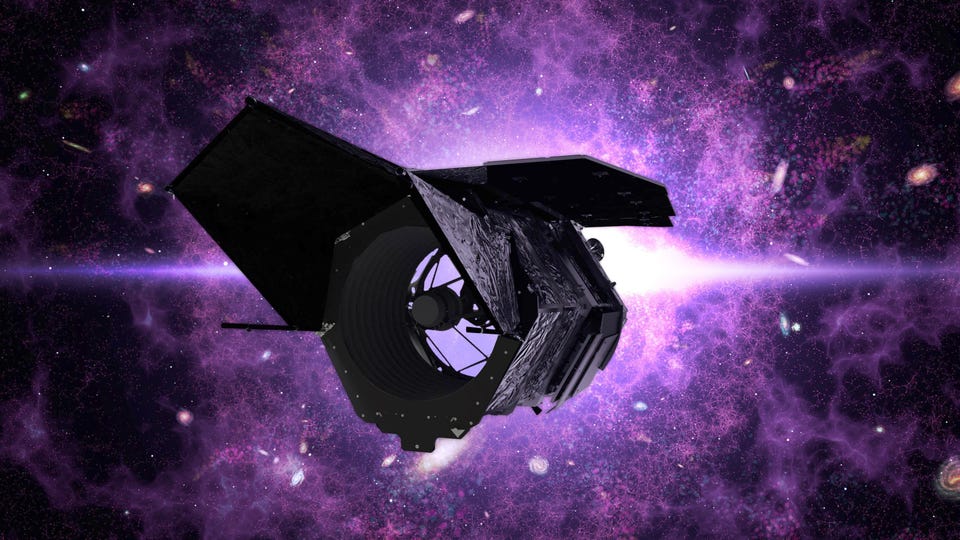Science SpaceX Will Launch The New $3. 2 Billion ‘Roman’ Space Telescope, Says NASA Jamie Carter Senior Contributor Opinions expressed by Forbes Contributors are their own. I inspire people to go stargazing, watch the Moon, enjoy the night sky New! Follow this author to improve your content experience.
Got it! Jul 20, 2022, 05:12am EDT | New! Click on the conversation bubble to join the conversation Got it! Share to Facebook Share to Twitter Share to Linkedin A high-resolution illustration of the Nancy Grace Roman Space Telescope against a starry background. . .
. [+] NASA’s Goddard Space Flight Center No sooner did the Webb telescope flash its spectacular first images across the world, do some science and even find time to get struck by something than NASA is planning the next space telescope. NASA announced today that it has contracted SpaceX to launch its new Roman Space Telescope.
Now in development, it will go skywards between October 2026 and May 2027 from Launch Complex 39A at NASA’s Kennedy Space Center in Florida atop a SpaceX Falcon Heavy rocket. SpaceX will make $255 million from the contract. What is the Roman Space Telescope? In some ways the Roman Space Telescope is a successor to Hubble, with a primary mirror measuring 2.
4-meters—the same size as Hubble’s. However, Roman will have a huge field of view, with its wide-angle lens able to see an area of the sky about 100 times larger than what Hubble can see. It’s expected to cost between $3.
2 billion and $3. 9 billion. A SpaceX Falcon Heavy rocket will launch NASA’s Roman Space Telescope in 2026/2027.
Getty Images MORE FOR YOU New Research Finds A Connection Between Domestic Violence And These Two Personality Disorders This Scientist Helps Andean Forests And Ecuador’s Women In STEM Exceptional Fossil Preservation Suggests That Discovering Dinosaur DNA May Not Be Impossible What will the Roman Space Telescope do? Roman will undertake a “Galactic Exoplanet Survey” designed to find Earth-like exoplanets and also help astronomers understand how the universe expands. Its wide-angle lens will help it map the Milky Way and other galaxies 100 times faster than Hubble and allow astronomers to see the environments around galaxies in the early universe. It will be able to create Roman ultra-deep fields far more extensive than either the Hubble ultra-deep fields or even the first Webb deep field .
It will also investigate dark matter and dark energy—modern astronomy’s greatest mysteries—and look for Earth-like exoplanets. In fact, Roman is expected to find thousands of exoplanets , including more “rogue” planets than there are stars in the Milky Way —at least 100 billion! It will do that using an incredible technique called gravitational microlensing. What is microlensing? Microlensing is what Roman is all about—it’s what makes it a unique and special space telescope.
It will allow astronomers to find new types of exoplanets thousands of light years from Earth orbiting stars near the center of the Milky Way. The technique is similar to how Albert Einstein’s theory of general relativity was proven during a total solar eclipse in 1919. Its incredible sensitivity will allow it to detect when the gravity of stars and planets bend and magnify the light coming from stars that pass behind them from the telescope’s point of view.
Portrait of American astronomer Nancy Grace Roman (1925 – 2018) at NASA’s Goddard Space Flight . . .
[+] Center in Greenbelt, Maryland, early 1970s. She is known as the ‘mother of Hubble’ for her role in the planning of the Hubble Space Telescope. (Photo by NASA/Interim Archives/Getty Images) Getty Images Who is the Roman Space Telescope named after? Dr.
Nancy Grace Roman, an American astronomer who spent 21 years at NASA, died in 2018 . She’s known as a the “mother of Hubble” and recognised for making the concept of the space telescope a reality. In the mid-1960s she headed-up a committee of astronomers and engineers to work on ideas for a space telescope and convinced both NASA and the U.
S. Congress that a powerful space telescope should be a science priority. The Roman Space Telescope was formerly known as the Wide Field InfraRed Survey Telescope (WFIRST).
Wishing you clear skies and wide eyes. Follow me on Twitter or LinkedIn . Check out my website or some of my other work here .
Jamie Carter Editorial Standards Print Reprints & Permissions.
From: forbes
URL: https://www.forbes.com/sites/jamiecartereurope/2022/07/20/spacex-will-launch-the-new-32-billion-roman-space-telescope-says-nasa/
